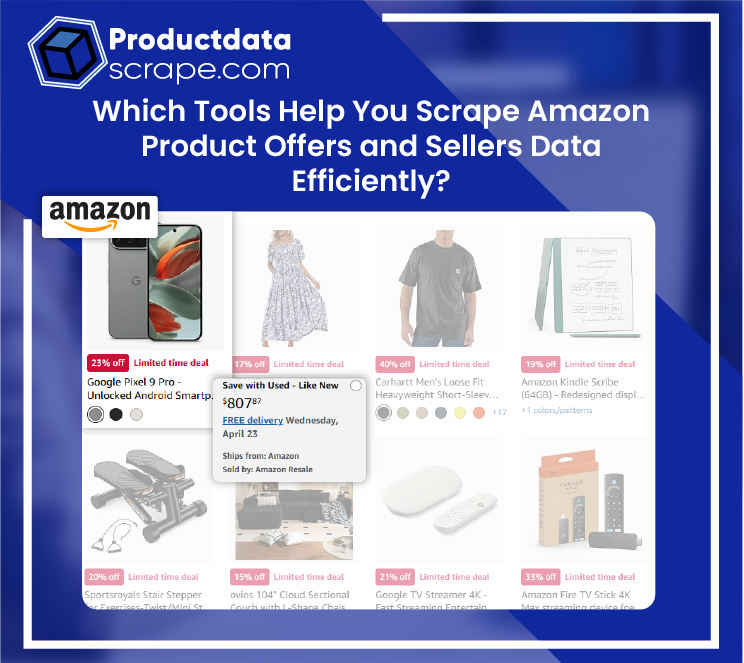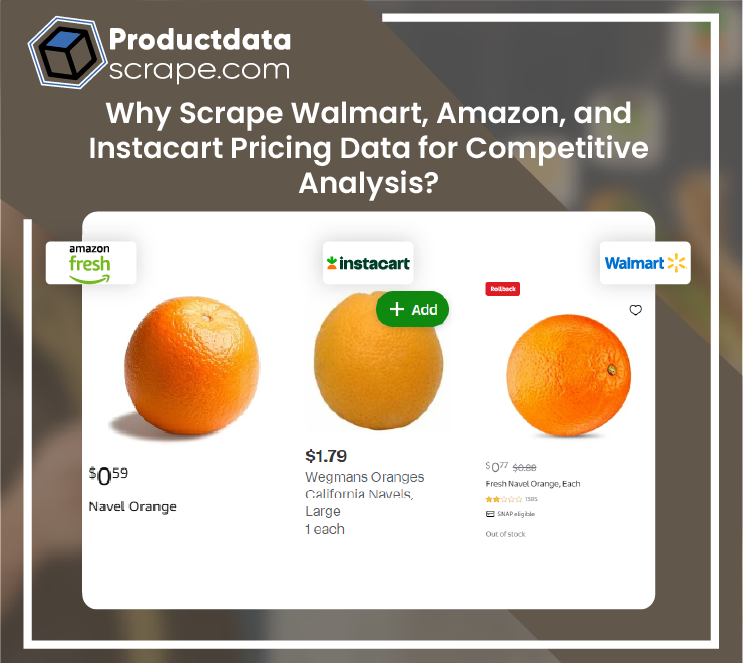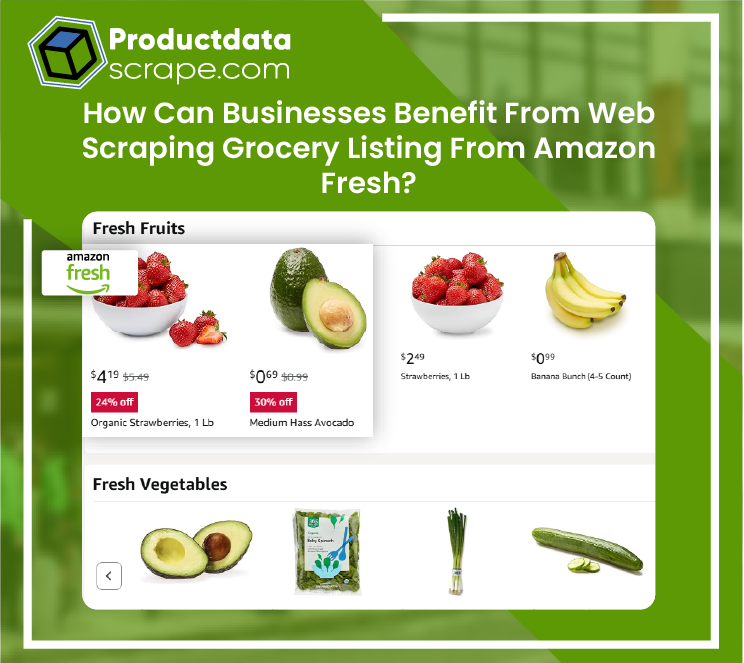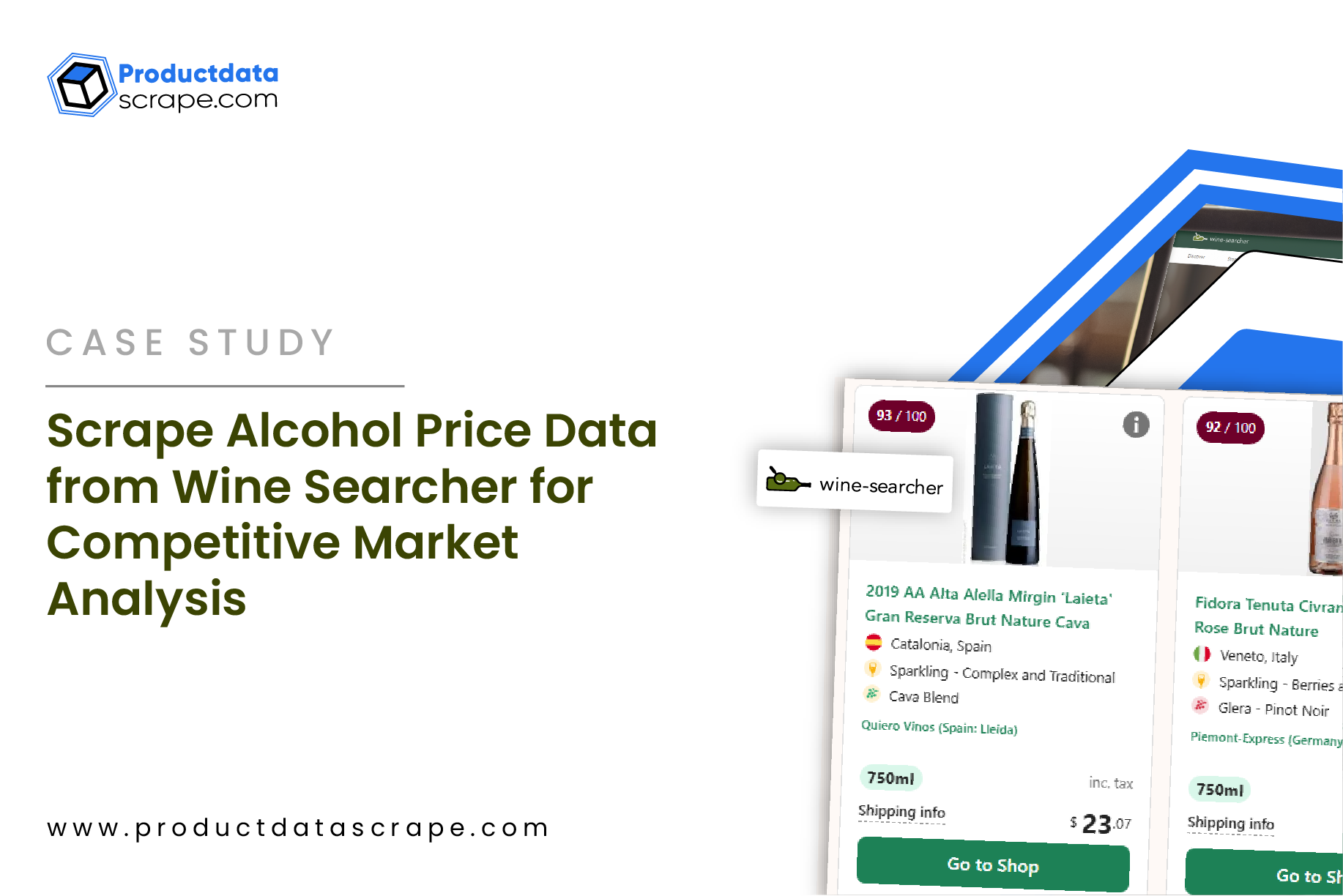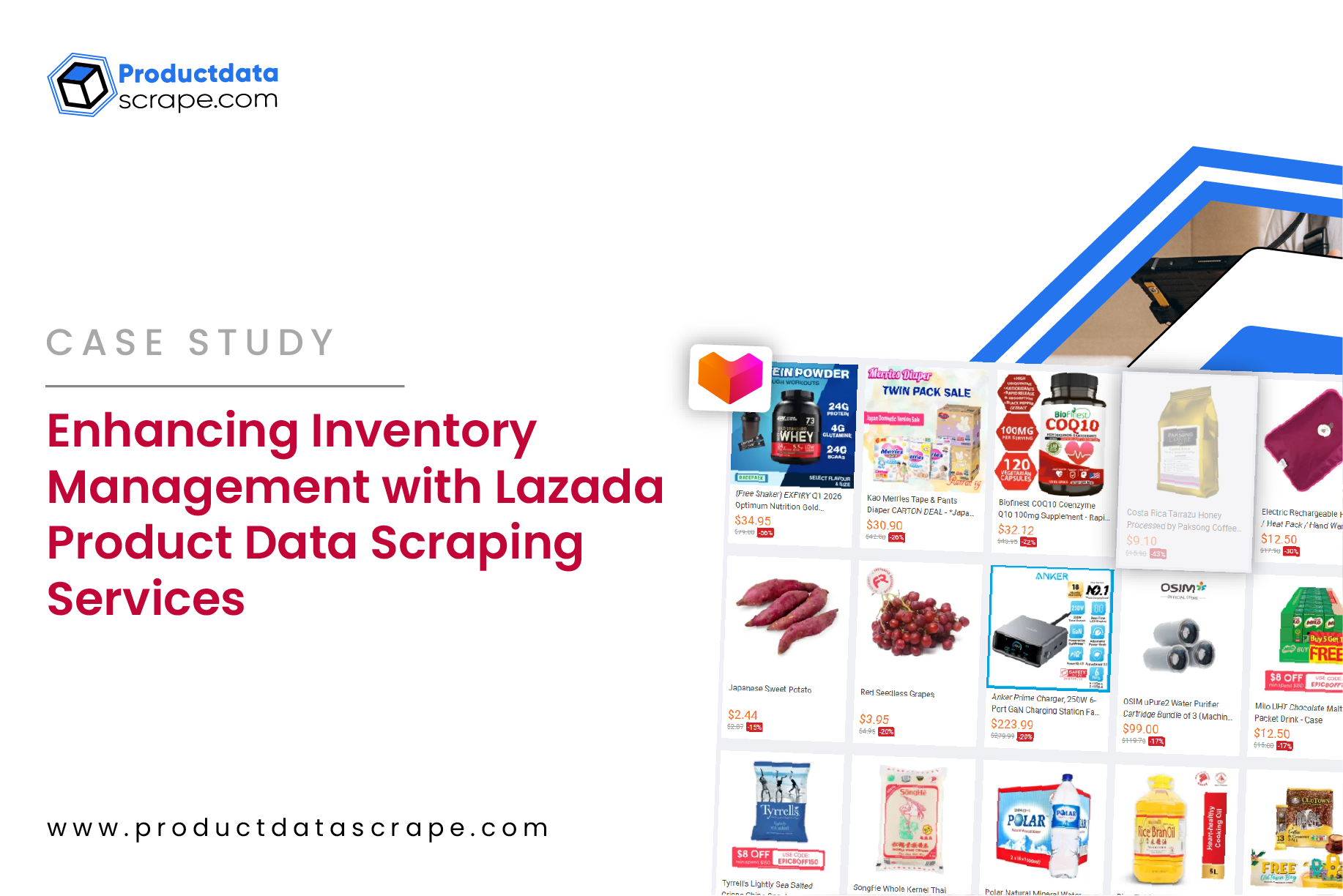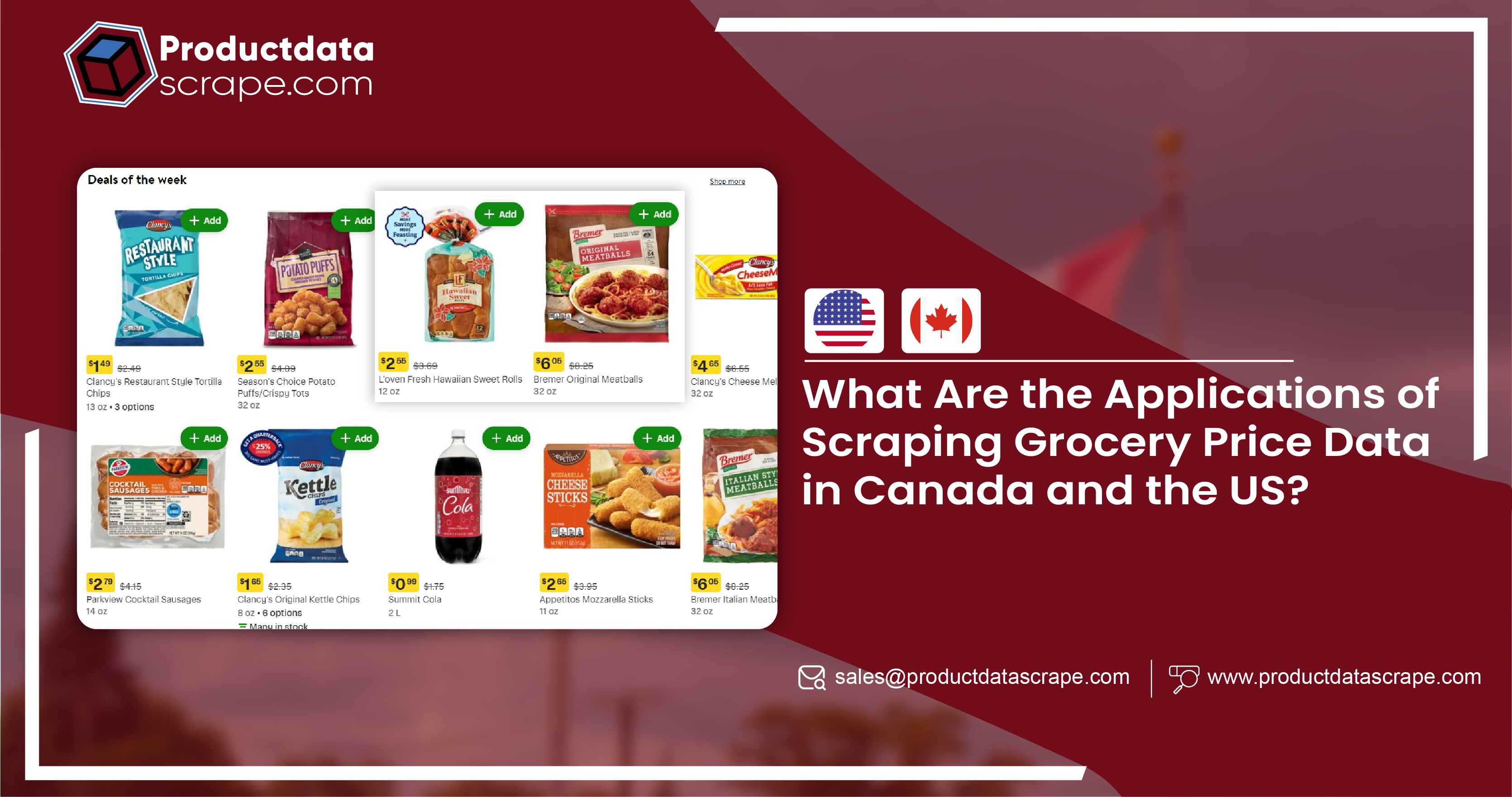
Introduction
In today’s data-driven market, Scraping Grocery Price Data in Canada and the US has become essential for businesses seeking a competitive edge. With the surge in e-commerce and online grocery shopping, companies require real-time, structured data to monitor prices, track inventory, and analyze consumer trends.
Grocery Price Scraping Canada enables businesses to stay updated on regional pricing strategies, ensuring better decision-making for retailers and suppliers. Similarly, Grocery Price Scraping US helps brands optimize pricing models, enhance market analysis, and improve customer engagement.
By leveraging grocery store data scraping, businesses can access valuable insights that drive strategic planning, competitive pricing, and better inventory management. The ability to extract and process real-time grocery data allows companies to anticipate market changes and respond effectively, making it a crucial tool for success in the highly competitive grocery industry of Canada and the US.
The Growing Need for Grocery Store Data Scraping
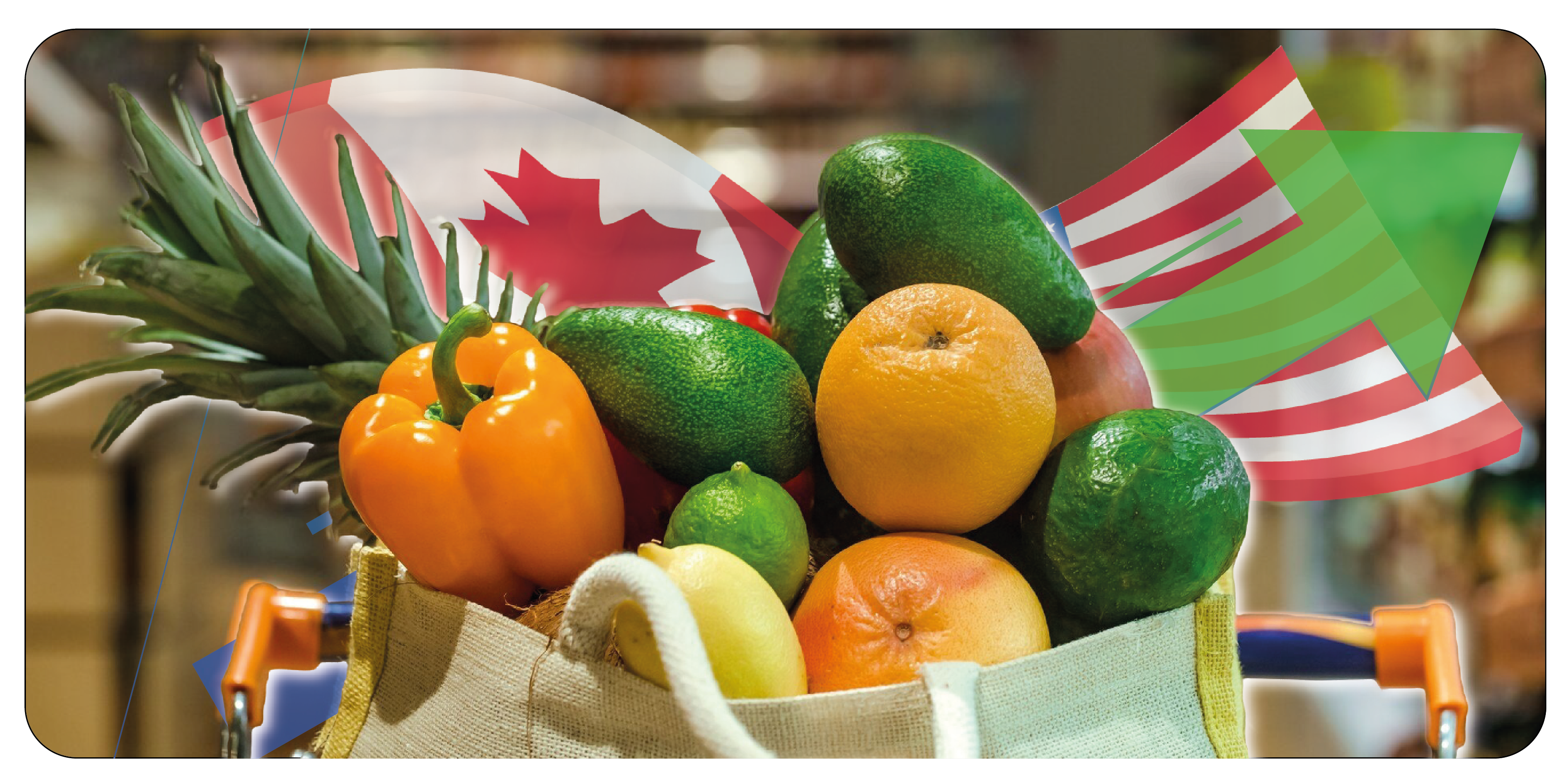
The grocery industry is rapidly evolving due to digitalization and the increasing importance of data analytics. Traditional brick-and-mortar stores are expanding their presence online, making grocery data more accessible yet complex. As consumer shopping behaviors shift toward e-commerce, businesses must rely on data-driven strategies to stay competitive.
Food Price Scraping in Canada and the US plays a crucial role in this transformation by providing real-time insights into pricing trends, inventory levels, and consumer preferences. Retailers, researchers, and businesses use data scraping to monitor competitor pricing, track supply chain fluctuations, and optimize marketing strategies. By leveraging structured grocery data, companies can make informed decisions, improve operational efficiency, and enhance customer experiences.
With the grocery market becoming more competitive, data scraping has become essential for retailers looking to maintain their market position. Accurate and timely data extraction enables businesses to adapt to industry trends, maximize profitability, and deliver value-driven services to consumers.
Key Applications of Grocery Data Scraping
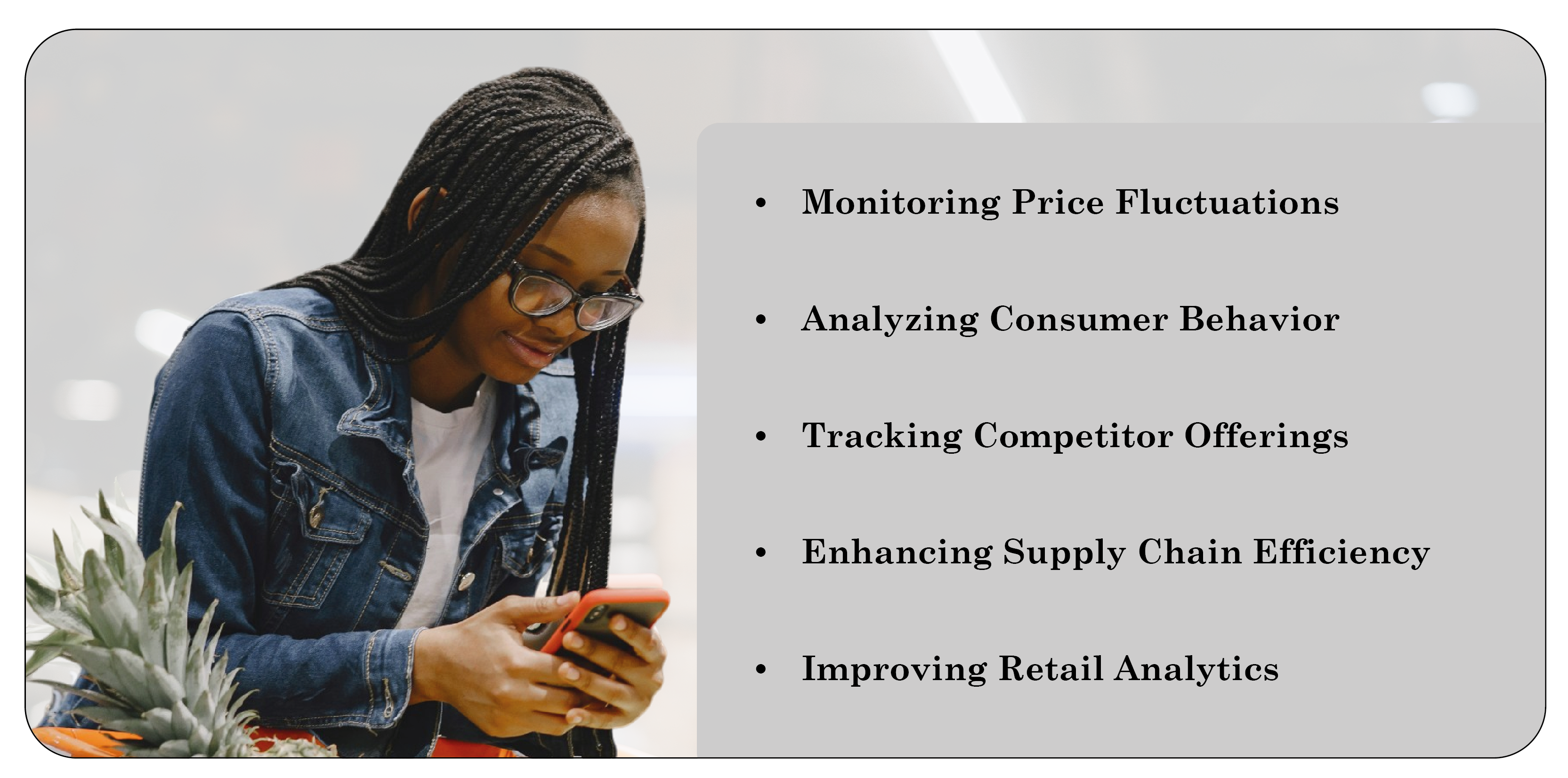
Grocery data scraping enables businesses to track prices, analyze consumer trends, and optimize inventory. By extracting real-time data, retailers gain insights into market trends, competitor strategies, and customer preferences, helping them enhance decision-making, improve efficiency, and maintain a competitive edge.
- Monitoring Price Fluctuations: Grocery prices are highly dynamic, influenced by seasonality, supply chain disruptions, and shifts in consumer demand. Using Retail Price Comparison Scraping, businesses can track real-time price changes, ensuring competitive pricing strategies.
- Analyzing Consumer Behavior: Retailers employ Grocery Store Web Scraping Canada to understand purchasing patterns, enabling personalized promotions and targeted marketing campaigns.
- Tracking Competitor Offerings: The grocery market is highly competitive, making it essential to monitor product availability, discounts, and promotions. US Grocery Data Scraping Services provide insights into competitor strategies, helping businesses stay ahead.
- Enhancing Supply Chain Efficiency: Data-driven approaches improve inventory management, reduce waste, and streamline logistics. Supermarket Pricing Data Extraction supports optimized procurement and distribution planning.
- Improving Retail Analytics: Scraped grocery data helps retailers refine product recommendations and enhance customer experiences, ensuring a more data-driven approach to grocery sales.
Major Grocery Platforms in Canada and the US.
Several online grocery platforms dominate the North American market. These include:
Canada
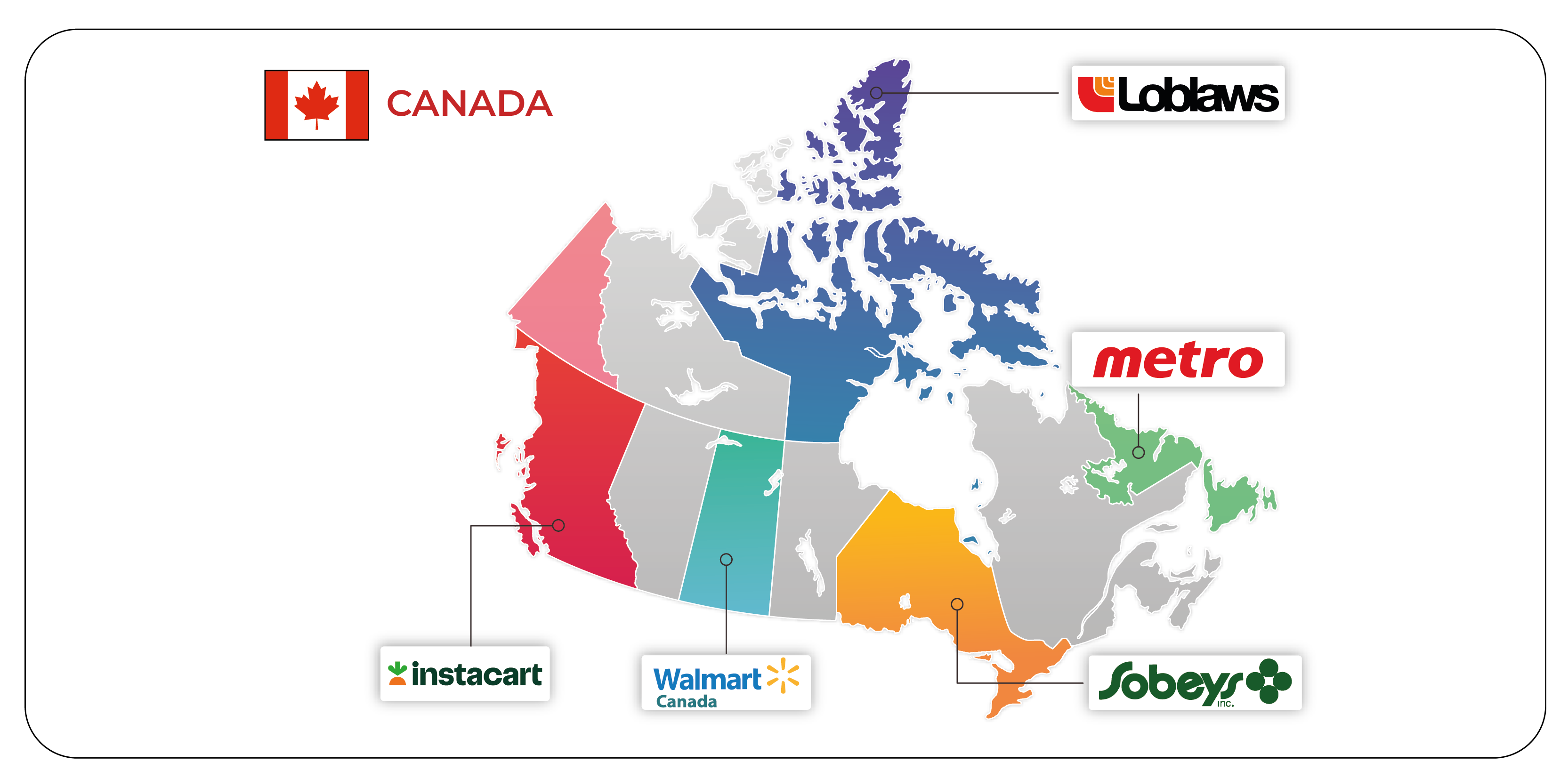
1. Loblaws: One of Canada’s largest grocery chains with an extensive online presence.
2. Metro: A prominent retailer offering online grocery delivery services.
3. Sobeys: Operates under multiple banners and provides online grocery shopping.
4. Walmart Canada: A significant player in online grocery retailing.
5. Instacart Canada: A delivery service partnering with multiple grocery stores.
The US
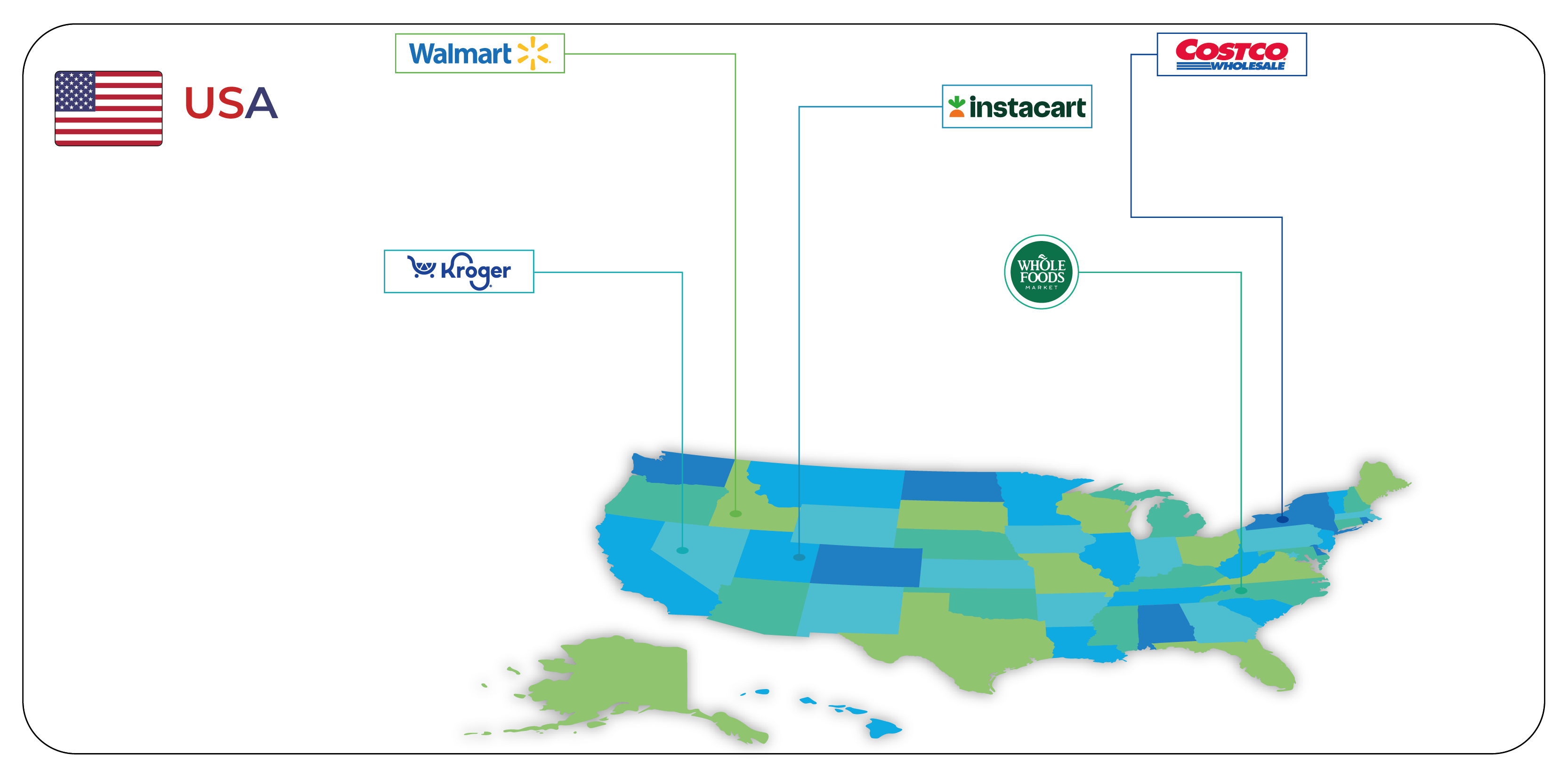
1. Walmart: A leader in grocery e-commerce with competitive pricing.
2. Kroger: Offers online grocery ordering and delivery services.
3. Whole Foods (Amazon Fresh): Provides organic and premium grocery products.
4. Instacart: Connects consumers with grocery stores nationwide.
5. Costco: Offers bulk grocery shopping online.
Applications of Grocery Store Data Scraping
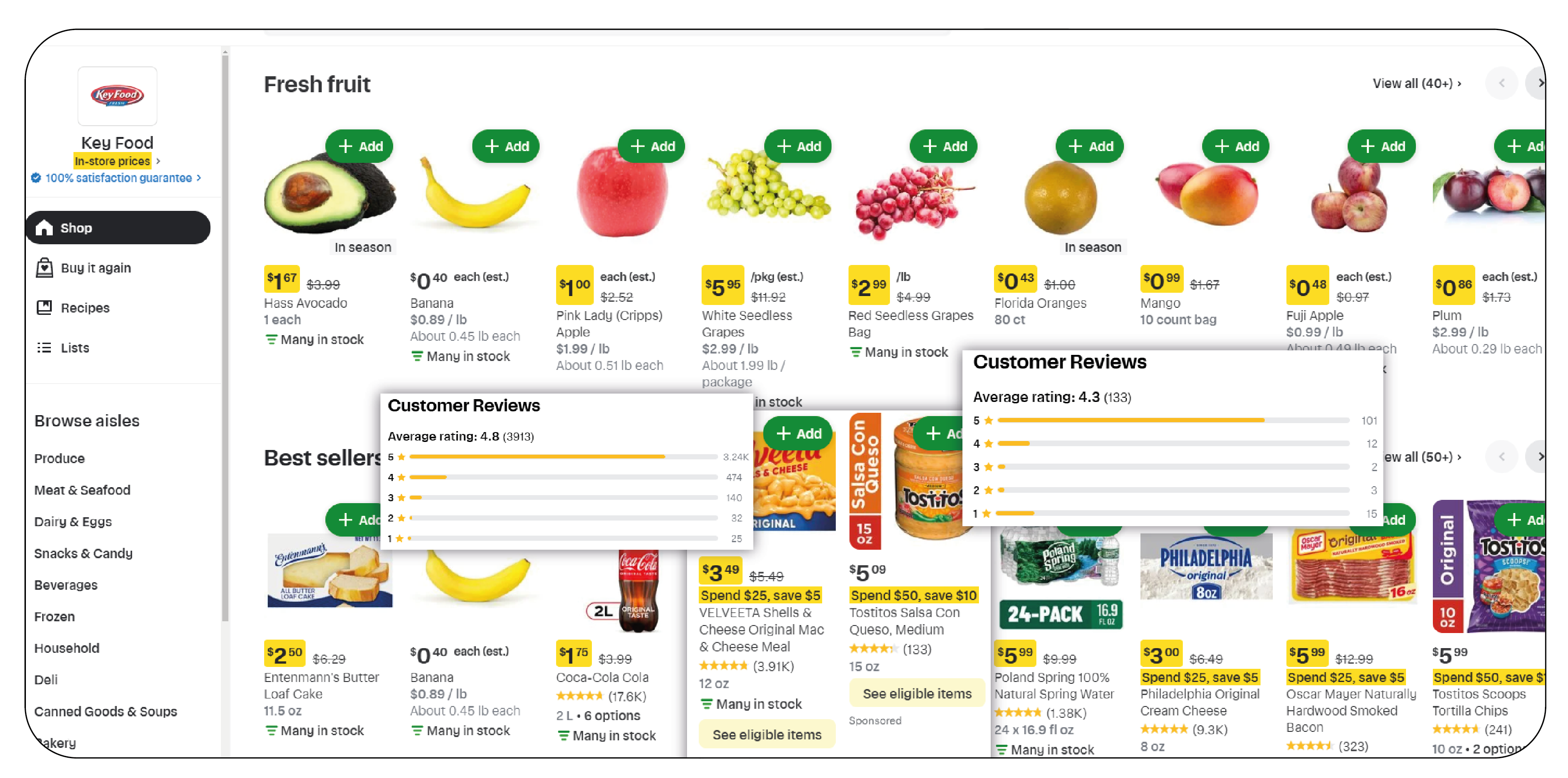
Grocery store data scraping is vital in the modern retail landscape. It offers businesses real-time insights into pricing, consumer behavior, and competitor strategies. From optimizing inventory to enhancing retail analytics, its applications drive efficiency, profitability, and market competitiveness.
1. Price Intelligence & Competitive Analysis: Retailers and e-commerce platforms rely on Online Grocery Pricing Intelligence to track competitors’ pricing strategies. By extracting pricing data across different grocery stores, businesses can adjust their pricing dynamically, ensuring they remain competitive. This is particularly important for grocery delivery platforms like Instacart, where consumers compare prices from multiple stores before purchasing.
2. Market Trend Analysis: Web Scraping Grocery & Gourmet Food Data enables companies to analyze market trends, such as the growing demand for plant-based foods, organic products, or sustainable packaging. These insights help businesses align their offerings with evolving consumer preferences.
3. Inventory Management & Stock Availability: Retailers use eCommerce Dataset Scraping to monitor stock availability across various grocery platforms. This is particularly useful during peak shopping seasons, such as Thanksgiving and Christmas, when demand surges for specific grocery items. Having real-time stock insights helps businesses plan procurement strategies effectively.
4. Consumer Sentiment & Reviews Analysis: Understanding consumer sentiment is crucial for grocery brands. E-commerce data extraction allows businesses to scrape product reviews and ratings to gauge consumer satisfaction levels and identify areas for improvement.
5. Personalized Marketing & Promotions: Retailers use Extract Grocery & Gourmet Food Data techniques to curate personalized promotions based on consumer preferences. Businesses can offer discounts and product recommendations tailored to individual shoppers by analyzing purchase history and browsing behavior.
Challenges in Grocery Data Scraping

While data scraping offers numerous benefits, it also presents several challenges, including:
- Anti-Scraping Measures: Many grocery websites implement anti-scraping technologies, such as CAPTCHA, IP blocking, and bot detection, making data extraction challenging.
- Data Variability & Inconsistencies: Product names, descriptions, and prices may vary across grocery platforms, making it difficult to standardize and analyze the data effectively.
- Legal & Ethical Considerations: Web scraping must comply with legal frameworks such as Canada’s Personal Information Protection and Electronic Documents Act (PIPEDA) and the US Computer Fraud and Abuse Act (CFAA). Ensuring compliance with website terms of service is critical to avoid potential legal repercussions.
- High Data Volume Processing: Grocery data is vast and requires advanced processing capabilities. Managing and storing large datasets while ensuring data accuracy and relevance is a significant challenge.
How Product Data Scrape Can Help in Scraping Grocery Data?
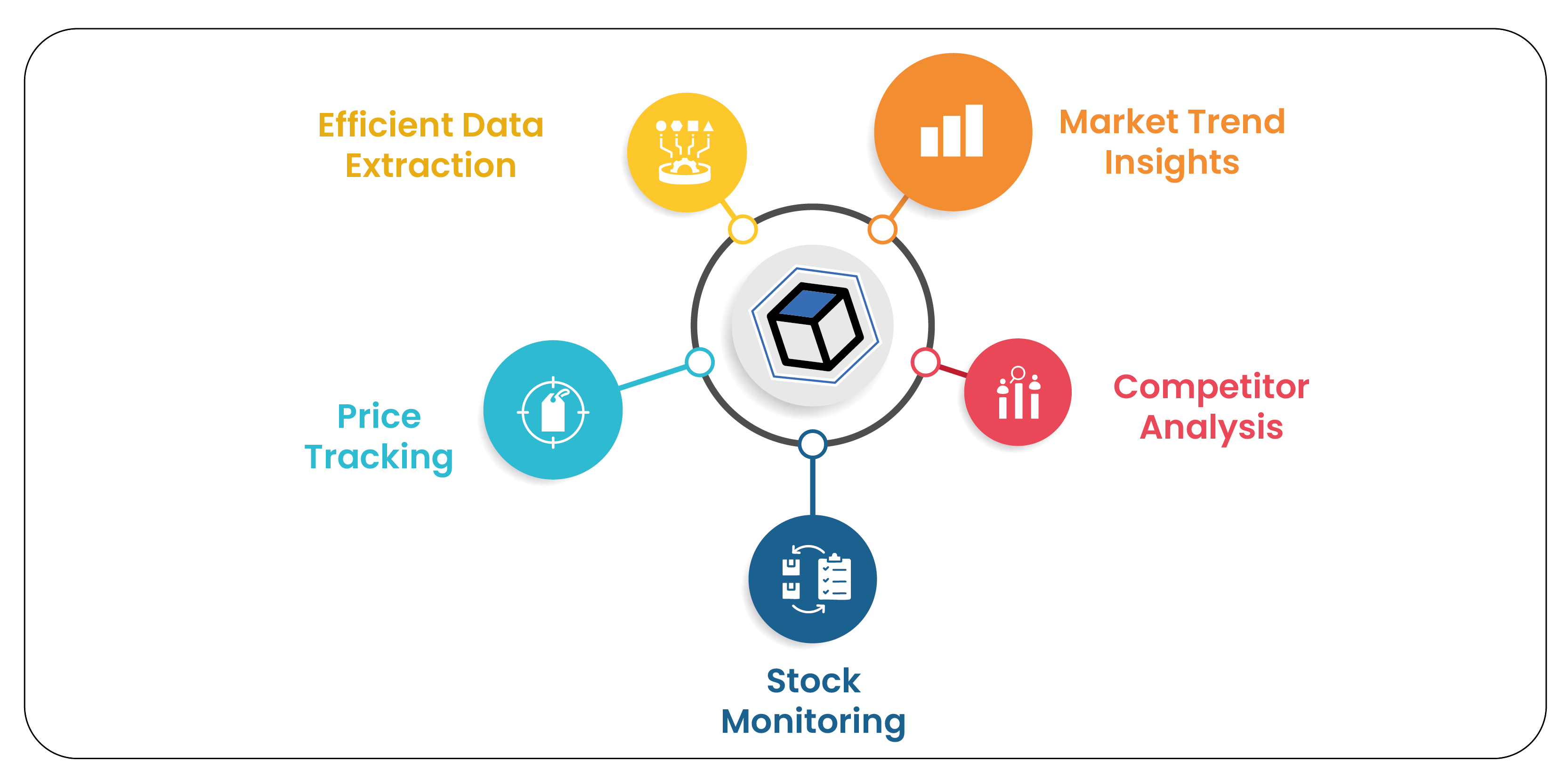
Efficient Data Extraction: Product Data Scrape enables automated extraction of grocery product details, saving time compared to manual methods.
Price Tracking: Helps monitor price fluctuations across multiple grocery platforms, enabling businesses to adjust pricing dynamically.
Stock Monitoring: Tracks product availability and inventory levels, ensuring accurate stock information is provided to customers.
Competitor Analysis: Allows businesses to gather competitor pricing and promotions, enhancing strategic decision-making.
Market Trend Insights: Identifies consumer demand trends by scraping product data, helping businesses predict demand and optimize their offerings.
Conclusion
Grocery store data scraping is transforming the retail landscape in Canada and the US. By extracting valuable insights from grocery platforms, businesses gain a competitive edge, optimize operations, and enhance customer experiences. While challenges such as legal compliance and anti-scraping measures exist, advancements in data extraction techniques continue to drive innovation in the grocery industry. As online grocery shopping grows, data scraping will remain crucial for businesses looking to thrive in the competitive North American market.
At Product Data Scrape, we strongly emphasize ethical practices across all our services, including Competitor Price Monitoring and Mobile App Data Scraping. Our commitment to transparency and integrity is at the heart of everything we do. With a global presence and a focus on personalized solutions, we aim to exceed client expectations and drive success in data analytics. Our dedication to ethical principles ensures that our operations are both responsible and effective.









